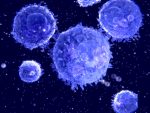Paquinimod, Possible Scleroderma Therapy, Shows Promise in Small Trial

Eight weeks of treatment with a small molecule called paquinimod significantly reduced the number of myofibroblasts — cells that drive scarring — in people with scleroderma, a small clinical trial reported.
Findings also suggested that paquinimod may lessen type I interferon (IFN) activity, a relevant scleroderma biomarker, and appeared to be well-tolerated by patients.
The study, “An open-label study to evaluate biomarkers and safety in systemic sclerosis patients treated with paquinimod,” was published in the journal Arthritis Research & Therapy.
Although the causes of scleroderma are not completely understood, the immune system is thought to be the main promoter of fibrosis in scleroderma, also known as systemic sclerosis or SSc.
Paquinimod (ABR-215757) is an oral small molecule that can modulate the immune system. In animal models of autoimmune disorders, such as multiple sclerosis and systemic lupus erythematosus (SLE), paquinimod has been reported to reduce inflammation. It does so by targeting a pro-inflammatory protein called S100A9.
Phase 1 studies with SLE patients showed that paquinimod was well-tolerated, with mild to moderate and temporary adverse events in doses up to 6 mg/day.
To determine the effects of paquinimod in scleroderma patients, as well as its safety and tolerability, researchers conducted a Phase 2 clinical study (NCT01487551) between late 2011 and February 2013 in Germany, Sweden, and Switzerland. The trial was sponsored by Active Biotech and was open-label, meaning it did not have a placebo or other control group.
The trial’s primary goal was to evaluate changes in disease-related biomarkers during treatment with paquinimod. Secondary objectives were to determine its safety, pharmacokinetics — how it moves into, through, and out of the body — and its impact on disease activity and quality of life.
Nine people with rapidly progressive scleroderma were given 3 mg of paquinimod orally each day for eight weeks. The dose was selected based on data from the previous SLE study. Seven of these nine were women, and their mean age was 48.
Blood samples were taken at every visit, two weeks before treatment initiation, at the study’s start (a baseline measure), and then at weeks two, four, eight (end of treatment), and at a follow-up exam at week 12. Skin biopsies were taken from lesioned skin on the forearm at baseline and at the end of treatment.
At baseline, one patient was found to have elevated blood levels of type I IFN activity. Type I IFN is an important regulator of the innate immune system, and previous studies have shown that its activity is higher-than-usual in people with scleroderma.
Type I IFN activity decreased in this patient with treatment, and stayed low through the end of the therapy’s use. Four weeks after the patient had stopped taking paquinimod, however, type I IFN activity levels were again elevated.
“An increase was recorded at 12 weeks follow-up in this patient, supporting that the observed effect is linked to the paquinimod treatment,” the scientists wrote.
Next, the team evaluated the expression (activity) of five type I IFN responsive genes — IFI44, IFI44L, IFI6, IFI27, and RSAD2 — reported to be increased in the skin of scleroderma patients. Mean messenger RNA (mRNA) levels of these genes decreased during treatment, but not by statistically significant amounts. (mRNA is a molecule that carries genetic information from DNA to make a protein)
In the patient with high IFN activity, the levels of four of these genes also decreased after treatment with paquinimod. Notably, this person had high expression of all five genes at baseline compared to the other patients.
In seven trial participants, blood levels of CCL2, a molecule involved in stimulating inflammation and tissue fibrosis in scleroderma, decreased throughout the eight-week treatment period. The expression levels of CCR2, the major receptor for CCL2, were also analyzed in the skin. In eight patients, CCR2 mRNA levels decreased to almost half their original value after treatment.
Also, the number of myofibroblasts in the skin dropped by 8% with paquinimod treatment when compared to baseline.
Paquinimod was generally well-tolerated, and all nine patients completed the study. Reported adverse events were mild to moderate and included joint pain, headaches, muscle aches, and diarrhea.
Since the trial was short, only minor and non-significant changes were seen in the modified Rodnan skin score, a measure of skin thickness, its researchers noted. Likewise, minimal changes were evident on Scleroderma Health Assessment Questionnaire and 36-Item Short Form Health Survey scores, two tests used to estimate quality of life.
“Analysis of biomarkers before and after treatment suggest reduced type I IFN activity and reduced number of myofibroblasts in lesional skin,” the scientists wrote. “Patients with increased type 1 IFN signatures might benefit most from this treatment.”
Findings in this proof-of-concept study need to be validated in a larger clinical trial that enrolls more patients “with a type 1 interferon signature … one of the main targets of paquinimod” and a control group, with treatment given for a longer period of time, they added.
Active Biotech announced in February 2020 that further work in paquinimod is on hold “for now,” so the company could focus on “prioritized activities.”







